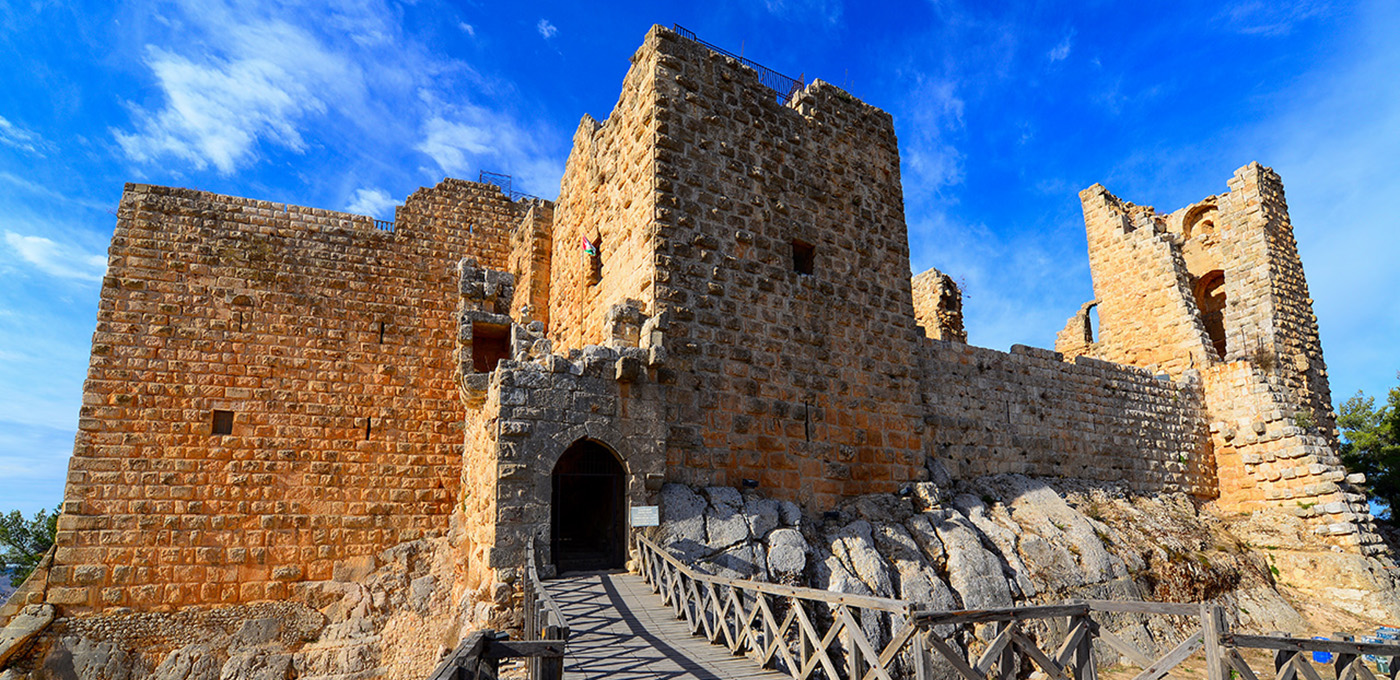
Ajloun
The marvels of nature and the genius of medieval Arab military architecture have given northern Jordan two of the most important ecological and historical attractions in the Middle East: the sprawling pine forests of the Ajloun-Dibbine area, and the towering Ayyubid castle at Ajloun, which helped to defeat the Crusaders eight centuries ago. Locals often take advantage of the green landscapes of Ajloun to take a break from city life and connect with nature.
The purpose of the present fort was anti-Crusader, built in 1184-85 by ‘Izz ad-Din Usama, one of Saladin’s generals. This fortress controlled traffic along the route connecting Damascus and Egypt. Moreover, this castle helped the authorities in Damascus to control the Bedouin tribes of Jabal ‘Auf, and to protect their realm against Crusader incursions, which used to come from Beisan in the west and Kerak in the south. It dominated a wide stretch of the northern part of Jordan Valley, as well as protected the development and control of the iron mines of Ajlun.
This superb piece of Ayyubid military architecture soon outlived its original purpose – in 1187 the Crusaders’ defeat at Hattin in Galilee ended their occupation of the Holy Land.
In 1214-15 the castle was enlarged by ‘In ad-Din Aybak, for the Ayyubid Sultan al-Malik al-Mu’azzam, to become one of tile chain of beacons and pigeon stations relaying messages between Damascus and Cairo and, in 1219, housing supplies for use against the fifth Crusade. In 1260 it fell to the Mongols but was restored by the Mamluk Sultan Baybars.
